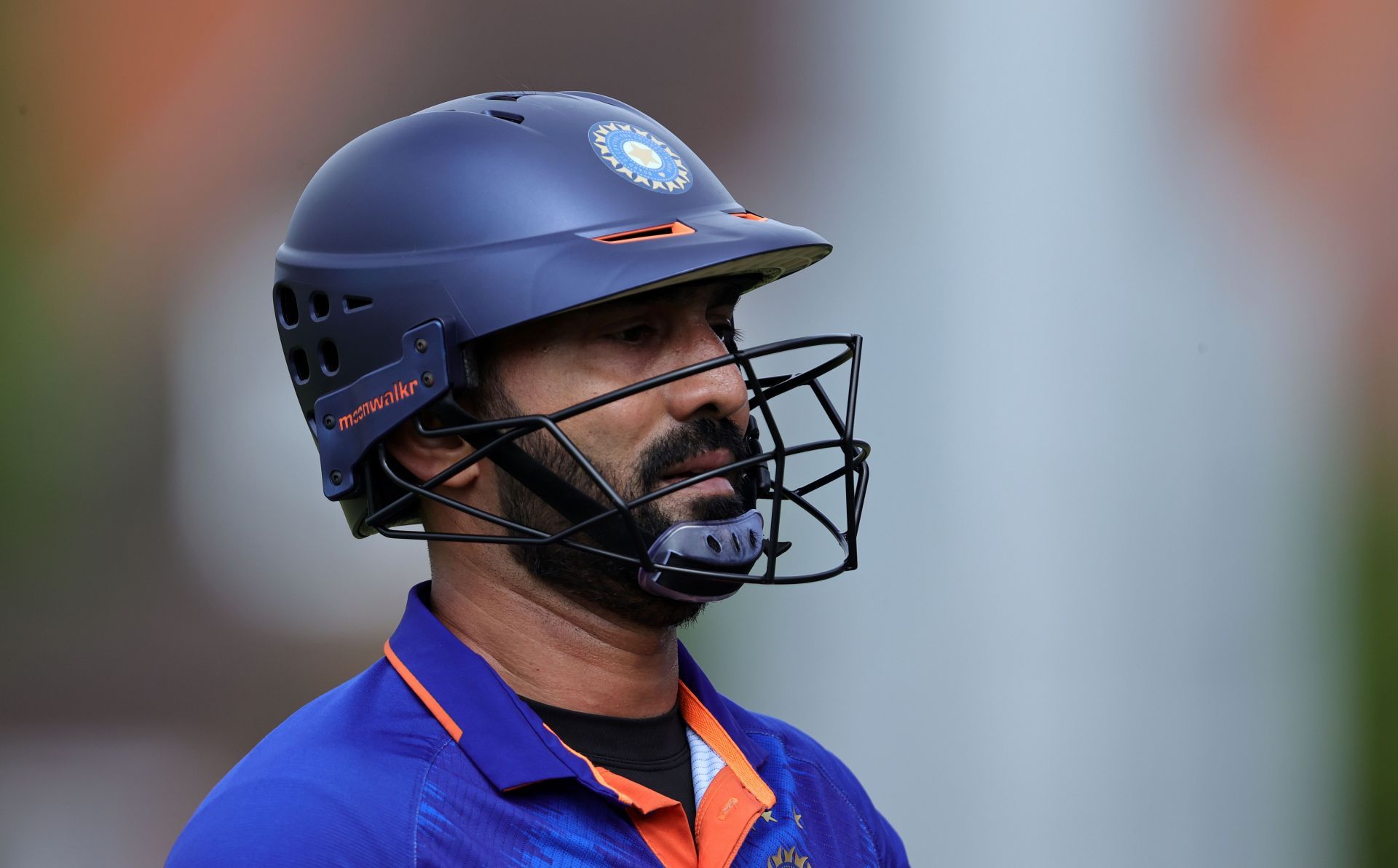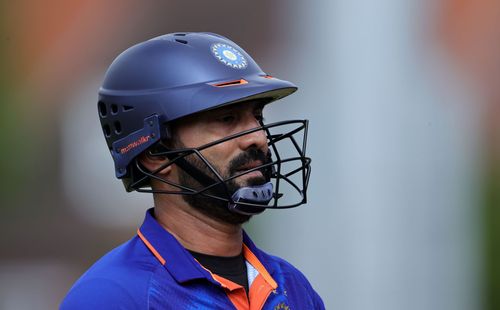
Dinesh Karthik is pretty good but he is not a magician

A couple of days ago, when India slipped to 126/4 in the 12th over, thousands at the ground and millions at home expected Dinesh Karthik to stride out to the centre. The wicket-keeper, who has been at the heart of a startling resurgence this year, came into the series opener on the back of some stellar form, and had performed similar rescue acts for the Royal Challengers Bangalore in IPL 2022.
To everyone’s surprise, though, Axar Patel walked out ahead of Karthik. At that juncture, it took many aback. Not just because Axar doesn’t have as expansive a range of strokes as the wicket-keeper, but also because the veteran was carded to bat ahead of him.
This wasn’t the first time this had happened either. Against South Africa at Cuttack nearly a month ago, Axar was promoted ahead of Karthik. The former scratched his way to an 11-ball 10. The latter thrilled with an unbeaten 21-ball 30-run knock.
Prima facie, an argument can be made that that tactic worked because, well, Karthik ventured into his preferred habitat and capitalized on the death overs. However, when considering India were thumped in that game, it seems that move might have been slightly counter-intuitive.
At Southampton on Thursday, it kind of paid dividends with India ultimately winning the game. The wicket-keeper, though, couldn’t really have as much of an impact. He came out to bat in the 17th over and perished for the cause in the final over, only adding 11 runs.
The more damning bit was that he only faced seven deliveries. In comparison, Harshal Patel, who swung like a rusty gate and missed more often than he connected, faced six deliveries. Karthik, by the way, is India’s designated finisher. Harshal, meanwhile, is a lower-order batter in international cricket, at best.
Dinesh Karthik might be useful in the middle overs too
So, there are a couple of elephants in the room that India need to address. Firstly, if Karthik is being held back just for the death-overs, there should be a conscious effort from all parties involved to give him as much strike as possible. The bigger question is why the wicket-keeper has to wait so long so regularly to leave an imprint on the game.
Against South Africa, it worked on the personal front. But the team suffered. At Southampton against England, it didn’t quite yield the desired outcome for the RCB wicket-keeper, although it culminated in a victory for India. However, there is more than enough evidence to suggest that this ploy, which revolves around the veteran being asked to bat during a particular phase, might not be very prudent.
In IPL 2022, Karthik cherished the extra clarity RCB provided him. He thought like a finisher and everything – right from his technical preparation to mental make-up was about how he could optimize the death overs. That said, there were days when Karthik had to consolidate the innings. And, he fared pretty well.
During the aforementioned season, the veteran scored 88 runs during the middle overs. He faced 70 deliveries too, which considering his overall tally of 180 balls faced, is quite revealing. The wicket-keeper only struck at 125.71 but he was dismissed on just two occasions, hinting that he knows how to navigate a tricky middle-overs terrain.
Axar, on the other hand, faced 65 balls and scored 75 runs at a strike rate of 115.38. he was also dismissed thrice, only averaging 25 in the process (as compared to Karthik’s corresponding average of 44). Throughout his T20 career too, Axar hasn’t been great in the middle overs, averaging 26.45 and striking at 113.79.
So, repeatedly promoting Axar doesn’t really make sense. He hasn’t fared too badly on one count, considering he hasn’t been dismissed. But he has used up deliveries – deliveries that Karthik could’ve used to gauge the conditions before opening up his shoulders.
When Ravindra Jadeja returns to the fold, that might not be a problem. Not just because Jadeja has greater batting pedigree than Axar, but also because he reads the shortest format as well as anyone else in the Indian set-up. But if Jadeja were to also get dismissed, should India really contemplate sending someone like Harshal ahead of Karthik – just to protect the latter and ensure that he is batting at the death? Probably not.
Funnily enough, post that debacle at Cuttack, India utilized the veteran at No.6 at Vishakhapatnam, despite tottering at 81/4 after 12.5. And, guess what the wicket-keeper did. He held his cards close to his chest initially before launching a monumental assault – one that ended with him scoring 55 off 27 balls.
In the past few months, Karthik has relished the extra responsibility and clarity that he has been afforded. But no one has said anywhere that he can only bat at the death.
The wicket-keeper, for large swathes of his international career, hasn’t been considered good enough to consistently play for India. But now, surely, he is good enough to be batting in different phases and contributing just as efficiently?
A lot of his success has revolved around a simplistic approach of not looking too far ahead. If this continues, though, India might run the risk of complicating the thought-process of a cricketer who has, at times, been guilty of getting ahead of himself and the situation.
Since the start of 2022, Karthik has made it amply clear that he is pretty good. But he, or any cricketer for that matter, is not a magician. As things stand, India are expecting him to wave his magic wand and transform perilous situations into prosperous ones. He will do it every now and then, just because he remains a gifted cricketer. But to ask him to do it all the time? That will be, bluntly put, quite unreasonable.


